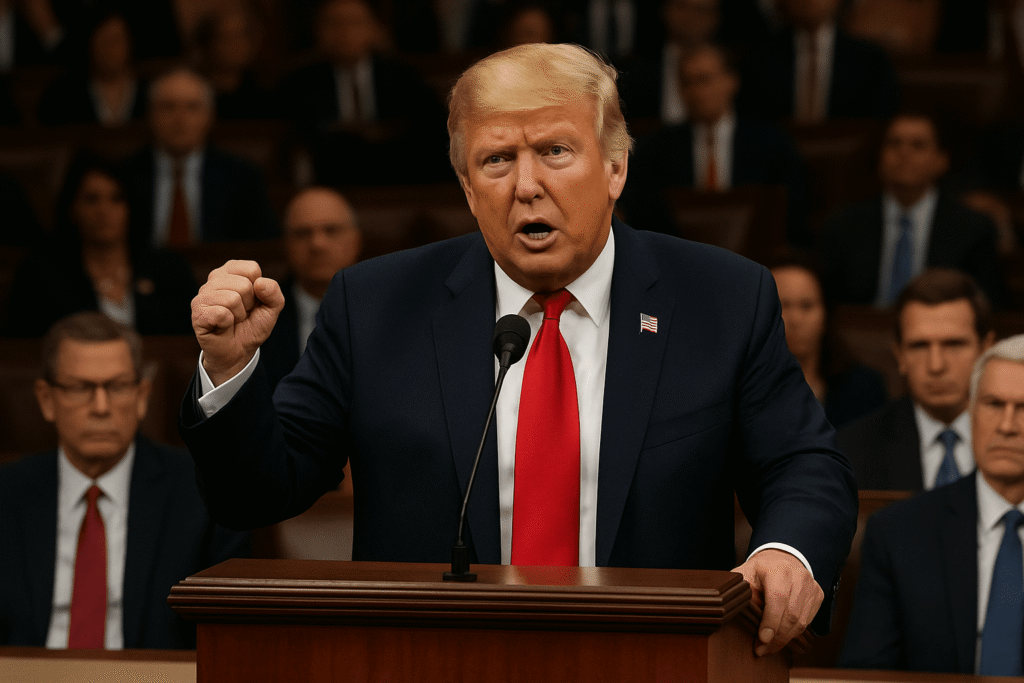The India Pakistan ceasefire explained is more than just a diplomatic milestone it’s a gripping story of high-stakes military strategy, political claims, and global attention. In early May 2025, tensions between the two nuclear-armed neighbors hit dangerous levels, with fears of a wider regional conflict. Then came an unexpected twist: U.S. President Donald Trump publicly claimed he had stepped in to prevent a nuclear showdown. But was that the real story?
Donald Trump’s Bold Claim in a High-Stakes Moment

During a White House event marking the Armenia Azerbaijan peace deal, Trump stood before the world and declared he had helped broker peace between India and Pakistan. “We sorted things out,” he said confidently, claiming his intervention stopped an impending India Pakistan conflict 2025 from spiraling into nuclear war.
The event itself commemorated a unique accomplishment: the signing of a peace treaty by Armenia and Azerbaijan following years of conflict. Trump, however, took the opportunity to make comparisons to South Asia, implying that his diplomatic clout extended from the subcontinent to the Caucasus. He went so far as to say that “five or six aircraft” were shot down during the standoff, a claim that immediately generated controversy.
India’s Strong Stand and Strategic Victory
While Trump’s statement grabbed headlines, Indian officials quickly countered. Air Chief Marshal A.P. Singh spoke in Bengaluru, clarifying that the ceasefire was India’s own decision not the result of external mediation. According to Singh, Indian forces executed a swift, high-tech military campaign lasting only 80–90 hours. In that short span, they inflicted heavy damage on Pakistan’s military infrastructure, downed at least five fighter jets and one larger aircraft, and crippled key command centers.
This decisive action shifted the balance, forcing Pakistan’s military leadership to reach out for backchannel talks. Singh revealed that Pakistan’s top brass sent a direct message to India’s Director General of Military Operations, requesting to open India Pakistan peace talks.
For India, the truce wasn’t an act of desperation it was a strategic choice. The government signaled to the world that it ended hostilities on its own terms, showcasing both military capability and diplomatic control.
Ceasefire in Context: A Rare Moment in a Volatile History
The India Pakistan ceasefire explained becomes even more significant when viewed against decades of mistrust and border skirmishes. Since partition, the two countries have engaged in multiple wars, each time flirting with the risk of nuclear escalation.
In 2025, the tensions were particularly alarming. Intelligence agencies on both sides reported heightened military readiness, and the international community feared that the next move could be catastrophic. Global markets showed jitters, defense analysts sounded alarms, and humanitarian groups warned of mass displacement if full-scale war erupted.
By neutralizing Pakistan’s military infrastructure so quickly, India avoided prolonged combat while sending an unmistakable message: it could dominate the battlefield without escalating into a full nuclear confrontation. This tactical success also created a rare opening for genuine India Pakistan peace talks.
Trump, the Nobel Buzz, and the Media Battle
Trump’s comments didn’t end with his initial claim. He later doubled down, telling reporters that his administration’s influence played a decisive role. The leaders of Armenia and Azerbaijan, fresh from their own peace agreement, even suggested nominating Trump for the Nobel Peace Prize feeding the Trump Nobel Peace Prize news cycle.
Indian media, however, treated the claim with skepticism. Analysts argued that while U.S. diplomacy might have helped keep international pressure on both sides, the core turning point was India’s military dominance. Some commentators even saw Trump’s remarks as an attempt to attach his name to a success he didn’t engineer.
This back-and-forth created a parallel media war one over credit, narratives, and international image. The ceasefire itself became a geopolitical trophy claimed by multiple players.
Global Reactions and Diplomatic Ripples
The India Pakistan ceasefire explained has far-reaching implications. In Washington, Trump supporters hailed it as proof of his global deal-making skills, while critics accused him of exaggeration. In New Delhi, officials projected calm confidence, using the event to showcase India’s ability to handle crises without relying on outside powers.
Pakistan’s official statements were more cautious. While confirming the ceasefire, they framed it as a mutual agreement, avoiding direct acknowledgment of military losses. Yet independent defense experts confirmed that Pakistan’s air force had suffered significant setbacks during the brief conflict.
The India Pakistan nuclear tensions eased for now, but the episode left an important lesson for the region: rapid escalation can be stopped, but only with decisive moves and credible deterrence.
Fragile Peace or a New Chapter?
The real test of this truce lies in what follows. Will both nations commit to sustained dialogue? Or will the border see fresh flare-ups in months to come? For now, the ceasefire holds, and regional stability has a fighting chance.
The India Pakistan ceasefire explained shows that while political claims and diplomatic theatre dominate headlines, it’s the combination of military strength and clear communication that often decides peace. Trump’s statements will remain part of the story, but the decisive actions taken in those critical 80–90 hours are what truly reshaped the outcome.
For India, the moment is an affirmation of its strategic confidence. For the world, it’s a reminder that peace even between long-standing rivals is always possible when one side has the resolve to end hostilities on its own terms.
